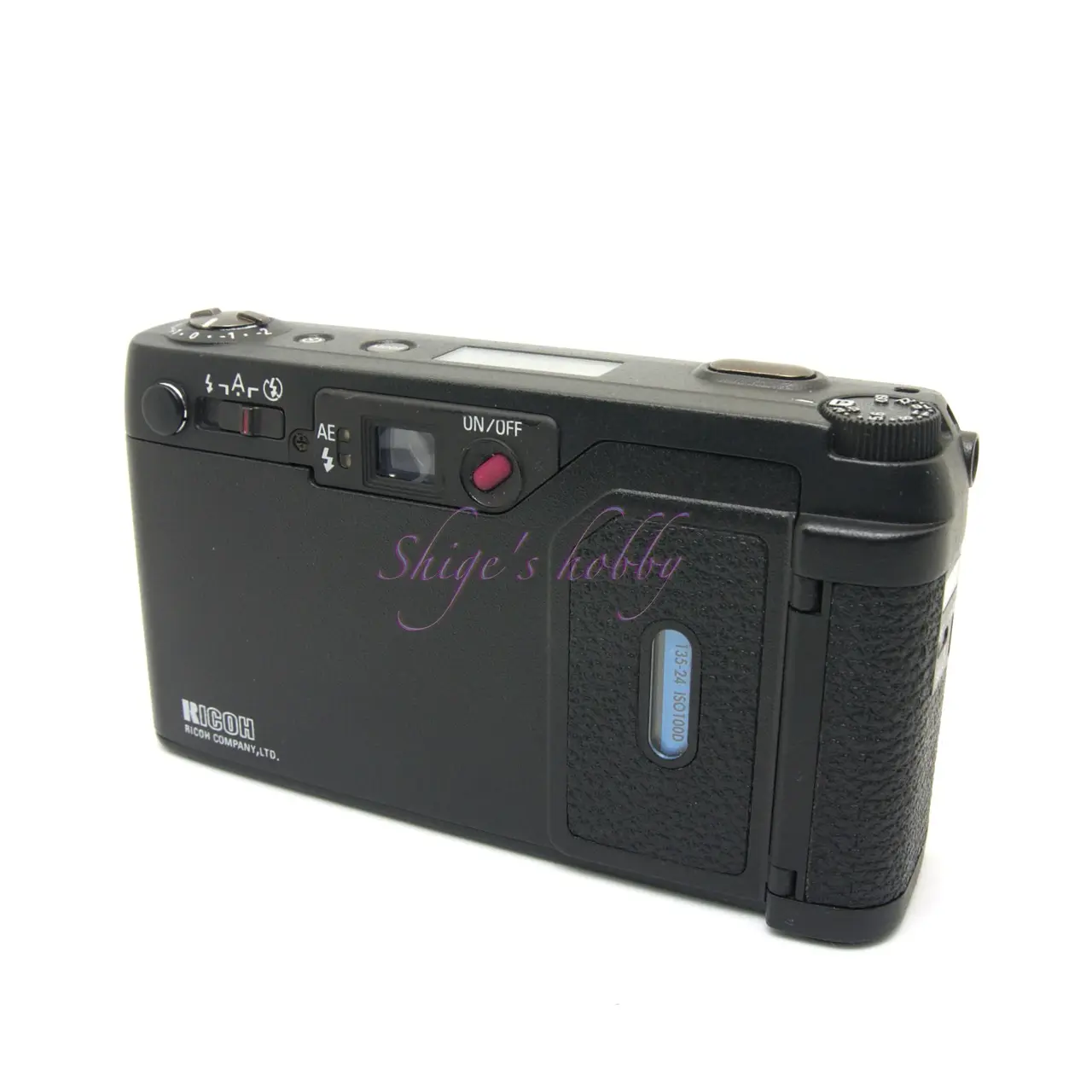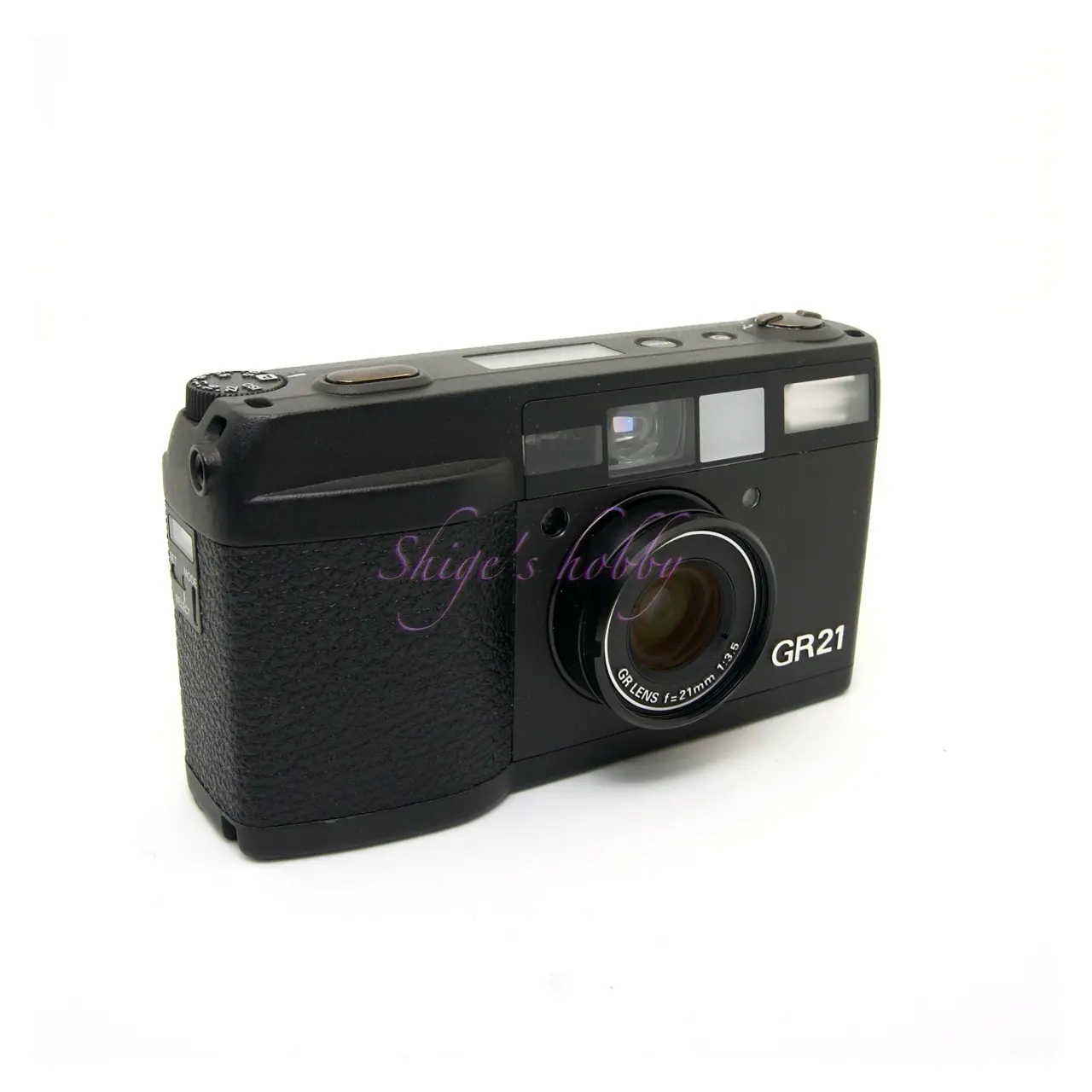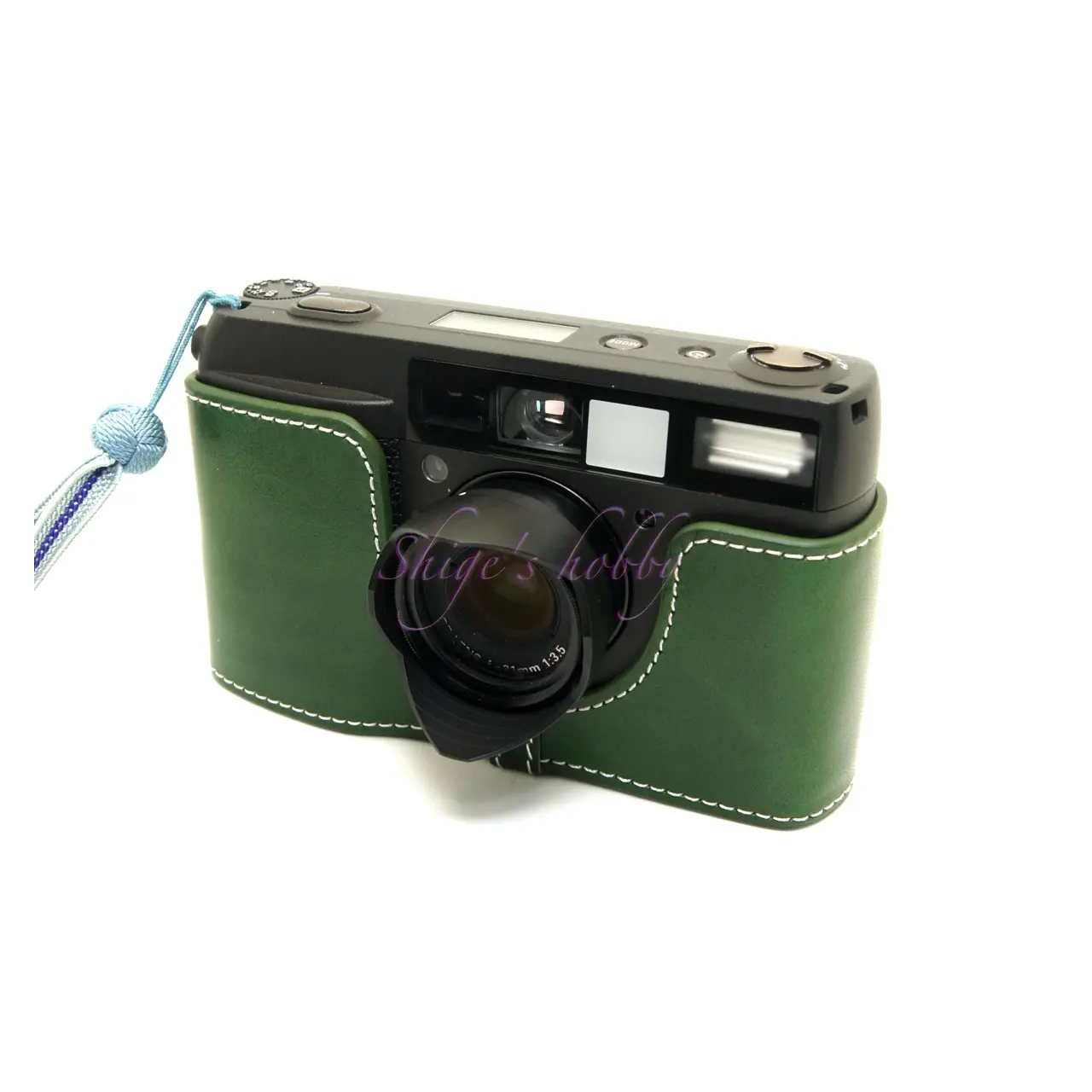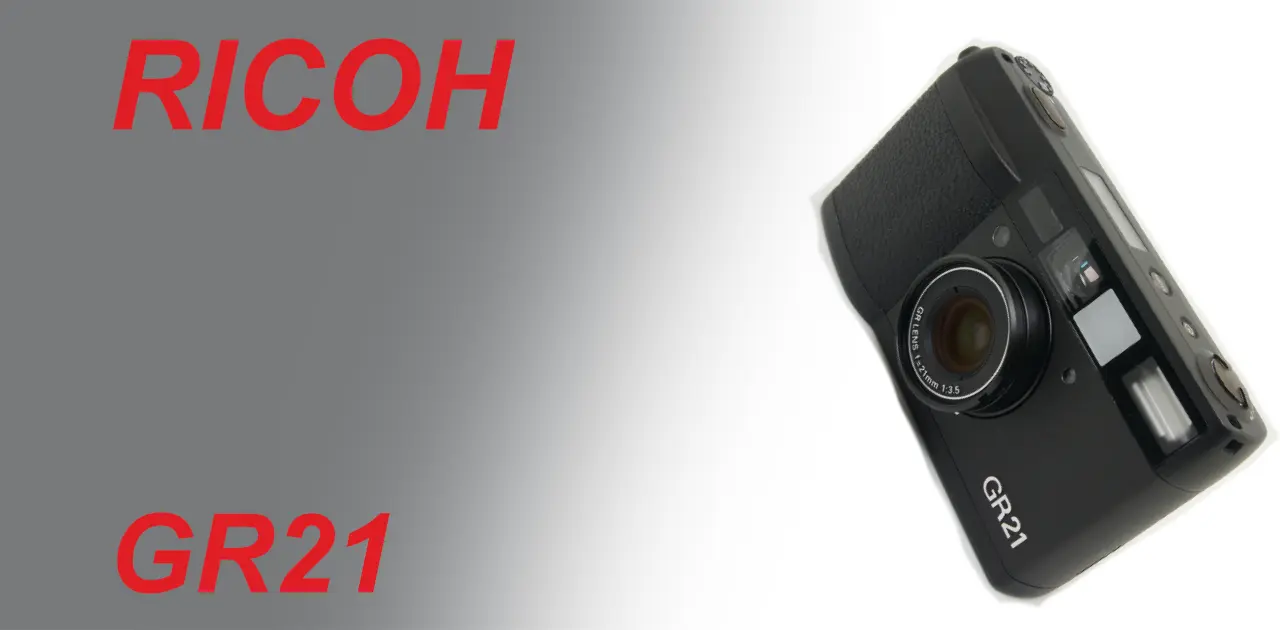Last updated on 2025-10-26
A review and photo examples of the Ricoh film camera GR21
Table of contents
Gallery
- Digitalization was done with MINOLTA DiMAGE Scan PRO
- Scanning software was VueScan
- FUJIFILM X-Tra400 color negative film
- MARIX ISO100D color reversal (KODAK E-100)
- Rollei retro80s ISO80 monochrome film
Review


1.Overview
The GR21 is a film camera with a 21mm wide-angle lens released by Ricoh in 2001.
The main specifications are as follows, and the detailed specifications of the camera are listed in the table.
- Equipped with 6 groups, 9 elements, focal length 21mm GR lens
- Maximum shutter speed 1/500
- Minimum shooting distance 0.3m
- Aperture F2.8-16
- Aperture blades 7

- The lens configuration diagram is taken from the GR21 PDF distributed by RICOH.
2.Usability
This is my first purchase of the GR 21, and I had previously used the GR 21mm lens with an L39 mount.
The reason for the purchase is that when I started using the LEICA R8 as a film camera after its DMR (Digital Module R) broke, I wanted a high-performance sub-compact film, so I searched for a candidate and purchased the GR 21.
The GR1 with a 28mm lens was already expensive in good condition, and I had already used it, so I removed it from my list of candidates. The Minolta TC-1 was also expensive, so I removed it from my list of candidates. The only film compact camera with a wider angle than 28mm was the GR21, so I chose it. I was curious and looked for it, and I found it for sale, so I thought it was fate, and purchased it. It is common for shopping to find something cheaper after you buy it, and since the condition of each used item is different, you have no choice but to buy it when you are satisfied with the condition and price.
As described, the GR 21 I purchased had some holes in the LCD screen, making it difficult to see the film counter, but it is not completely gone, so it does not interfere with shooting. There are some companies overseas that offer a service to replace this LCD.
The GR series uses a method used in some Japanese compact cameras, where the film starts to wind automatically when the film is loaded, and all the frames of the film are wound into the camera body and then returned to the cartridge when shooting. Therefore, the order in which the film is shot is different from that of a normal camera. When you start using it, you wind the film all the way into the camera, so it takes a little time to start using it, and when you finish shooting, you just return the little bit of film left in the camera to the cartridge, so it’s done in an instant.
Normal cameras require time to wind the film after shooting, so the timing is different.
When the film is fully wound, an E is displayed on the camera’s LCD, so I panicked thinking it was an (E) for error, but it was actually an E for end. This is written in the manual, so it’s my fault for not reading it. I was worried that I had made a mistake because the film was not wound properly, but that wasn’t the case.
After using three rolls of film, the GR 21mm lens has some barrel distortion, but it’s not so extreme that it’s practical enough without correction. When shooting the sky, the peripheral areas are slightly dimmed, but not so much that it’s unpleasant.
Looking at the results, there are many photos that are out of focus even though they are taken at a distance. This could be a problem with the camera itself, or a malfunction in the distance measurement part.
Also, when I want the camera to focus on a distant subject when taking a photo, there is a fair chance that the focus mark in the camera’s viewfinder will show a person mark at a close distance.
When I notice this, I remeasure the distance, but if I rush and release the shutter, the photo will be out of focus.
When I have time, if the subject is clear, such as close or far away, I change the shooting mode myself and fix the focus to the desired setting. I miss the feeling of being disappointed when I see the results because it’s film shooting, but with film prices rising these days, I would like to avoid this if possible.
3.Summary
In conclusion, to sum up the GR 21, it is the only compact camera equipped with a wide-angle lens with a focal length of 21mm. Although the real image viewfinder only allows you to check the composition, it captures the range you see almost exactly as you see it.
As we enter the 2020s, film prices have risen sharply, so it may be difficult to use a camera even if you buy one, but it’s a good idea to use a film camera while the film is still usable. I wish I had used this camera back when Kodachrome was still around.
Teleconverter, Wideconverter
I thought I’d add a wide-angle and tele-converter to increase versatility in addition to the 21mm, and considered using a wide-angle and tele-converter for digital cameras. However, in normal shooting mode, the lens of the GR21 moves quite a bit when focusing, so I gave up on it because I thought the motor would break down if I attached a heavy object to the end of the lens and focused.
Also, the tele-converter for Nikon’s compact digital camera that I have has a connection screw diameter of 28mm, which is slightly different from the 30.5mm of the GR21. I tried looking for a ring to convert from 30.5mm to 28mm, but couldn’t find one, and I would have to make a roundabout conversion from 30.5 to 37 to 28, so this was also impractical.
Specification and Competitor
| Items | GR1(GR1s,GR1v) | GR21 | MINOLTA TC-1 |
| Focal length | 28 | 21 | 28 |
| Lens Construction | 7elements in 4groups | 9elements in 6groups | 5elements in 5groups |
| Leaf blade | 7 | ← | Rotating circular hole type |
| Aperture | 2.8-16 | ← | 2.8/5.6/8/16 |
| Max Shutter speed | 1/500 | ← | 1/750 |
| Min distance | 0.35 | 0.3 | 0.45 |
| Finder type | Daylighting reverse Galileo method 0.43 times Vertical: 81% Horizontal: 83% | Daylighting reverse Galileo method 0.33 times 83% | real image 0.4 times 85%/3m |
| Battery | CR2 x1 | ← | CR123A x1 |
| Recorded Media | 35mmフィルム | ← | ← |
| Size(mm) W x H x D | 117 × 61 × 26.5 | 117 × 64 × 26.5 (with Lens 38.5mm) | 99×59×29.5 |
| Weight(g) Only body | 175(No date mode) 177(With date mode) | 200 | 185 |
| Release date | 1996 | 2001 | 2000.4 |
| Price(Yen/No-tax) | No date type:¥90,000- With date type:¥100,000- | ¥138,000- | ¥125,000- |
Options
- leather case
- Hood (GR21)
- front cap
- Various filters
Reference links
Update history
- 2024.03.18
Affiliate link
- Please see the disclaimer regarding advertising here.
- Italicized links in the text are advertisement links that take you to other sites.
- Ricoh camera・Ads by Amazon
- Ricoh books・Ads by Amazon

Amazon Prime Sale



Be First to Comment